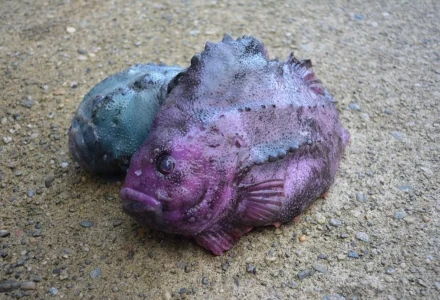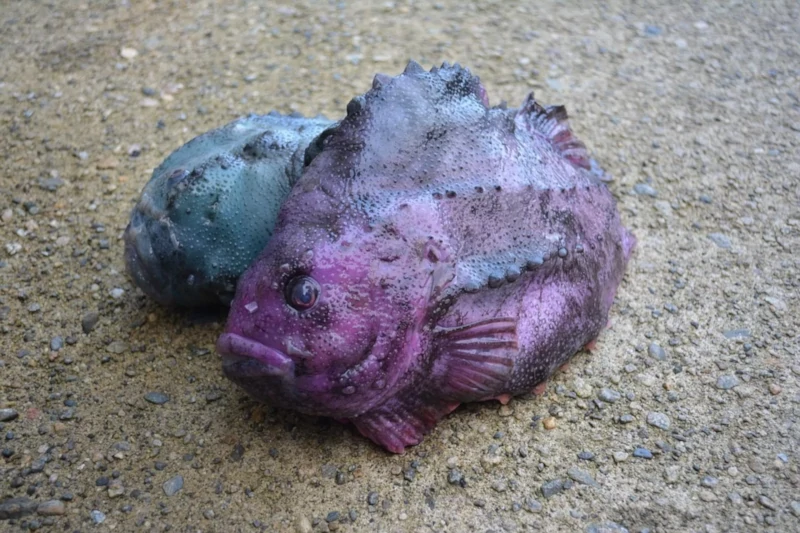Lumpfish Facts
- First of all, the quite distinctively-named Lumpfish represents a specific species of remarkable marine fish. Furthermore, the sincerely amazing animal belongs to the Family collectively known by the equally unusual name of Lumpsuckers. The species also remains unique in a particular fashion. That holds true because of the fact that the fascinating fish forms the only known member of its genus.
- The creature also bears the somewhat cumbersome scientific name of Cyclopterus lumpus. Thankfully, however, the source of its common name is apparent from its appearance. Sadly, the animal remains relatively little studied. Therefore, researchers still possess only limited knowledge of certain facets of its life. This deficit of information primarily pertains to its behavioral patterns and its biology.
- Due to the lack of data in many parts of its range, its population remains unknown. However, the IUCN currently lists the Lumpfish as Near Threatened in Europe. This comprises the only region of its range that presently has sufficient data for an informed listing. This status occurs due to the fact that its population appears nearly depleted. The main reasons for this appear to be over fishing and climate change.
Related Articles
Fangtooth Longfin Batfish Crocodilefish
Lumpfish Physical Description
As the common name somewhat suggests, the body of the aptly-named Lumpfish has a generally ball-like shape to it. It also frequently presents a knobby shape. In addition, much like many related species, the odd-looking animal displays a moderate degree of the trait of sexual dimorphism.
In particular case of this type of fish, this results in the females attaining a size roughly 25% larger than that of the males. Mature female specimens reach an average length of 20 in (50 cm). Meanwhile, the slightly less robust males typically reach an average body length of about 16 in (40 cm).
Furthermore, the coloring of the Lumpfish appears highly variable. As a result, individuals may be either gray, bluish, olive, yellowish, or various shades of brown. Males also usually develop as brighter colored than the females. In addition, the males typically turn a bright orange-red during the breeding season.
- Kingdom: Animalia
- Phylum: Chordata
- Class: Actinopterygii
- Order: Scorpaenfiormes
- Family: Cyclopteridae
- Genus: Cyclopterus
- Species: C. lumpus
Lumpfish Distribution, Habitat, and Ecology
Perhaps most surprisingly, the remarkable Lumpfish in fact possesses a moderately limited range of distribution. First of all, the animal principally inhabits specific parts of the North Atlantic Ocean. Secondly, however, scattered populations can also reach adjacent portions of the Arctic Ocean. More precisely, the known range of this fish extends from the Chesapeake Bay on the coast of North America to the coast of Spain in Europe.
The limited and spotty information researchers have concerning the Lumpfish makes detailed analysis of its patterns difficult. However, it appears that the majority of individuals spend the first few months of life in tidal pools or clumps of seaweed. Additionally, as these individuals grow to ever larger sizes, they move further from shore. Scientists once believed it to be a bottom-dwelling species. But we now know it migrates between levels of the ocean.
Research indicates that the Lumpfish typically begins breeding very shortly after reaching physical maturity. It has also evolved an impressive survival trait. That’s because, after mating, the female commonly lays as many as 220,000 tiny eggs after a single mating. Evidence indicates that the male prepares a nest after mating, and then remains to help care for the eggs. After hatching, the animal feeds mainly on a wide variety of fish eggs, zooplankton, and small crustaceans.
Species Sharing Its Range
Clymene Dolphin Sea Spider Fried Egg Jellyfish
Check out our other articles on 7 Wondrous Wasps Worldwide, Harpy Eagle, Reynisfjara Beach, Rafflesia arnoldii, Marine Iguana, Green Orchid Bee, Bornean Flat Headed Frog


